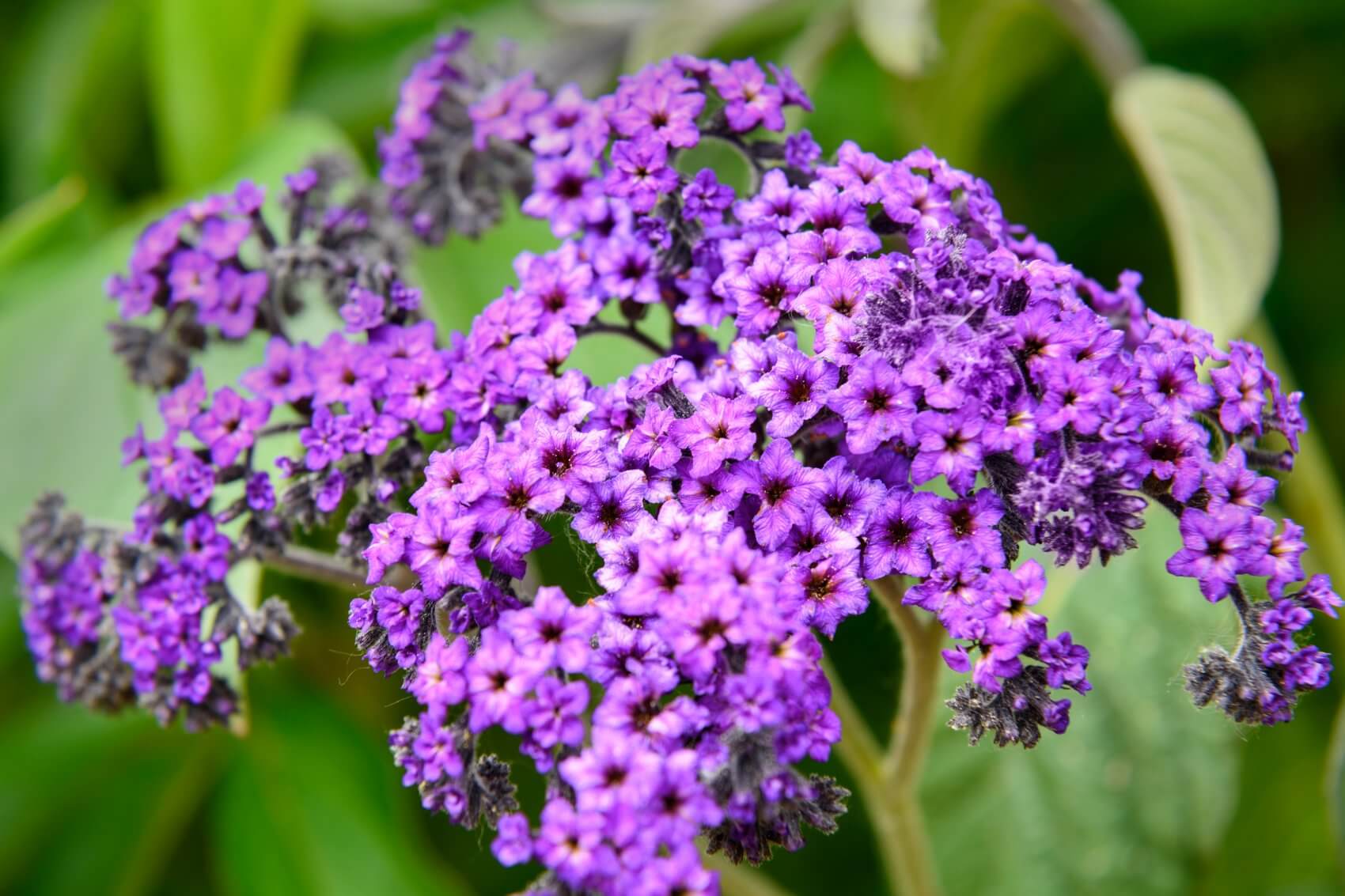
The heliotrope plant, also known as Heliotropium arborescens, is a fascinating and beautiful flowering plant that is sure to captivate any gardening enthusiast. Native to Peru, this plant is renowned for its vibrant purple flowers and aromatic scent, making it a popular choice for gardens and landscapes all over the world.
But there’s more to heliotrope than meets the eye. In this article, we’ll explore 13 astonishing facts about heliotrope that will surely deepen your appreciation for this remarkable plant. From its historical significance to its medicinal properties, you’ll discover the wonders of heliotrope and why it deserves a spot in your botanical repertoire.
Key Takeaways:
- Heliotrope, also known as the “cherry pie plant,” is a captivating flower with a sweet fragrance that attracts bees and butterflies, making it a delightful addition to any garden.
- Heliotrope is a resilient, sun-loving plant that blooms for a long season, attracts beneficial insects, and symbolizes love and devotion, making it a perfect choice for both experienced and novice gardeners.
Sweet Fragrance
One of the most enchanting features of heliotrope is its intoxicating scent that resembles the aroma of freshly baked cherry pie. Its sweet fragrance attracts bees, butterflies, and other pollinators, adding life and movement to any garden.
Rich Purple Flowers
The heliotrope plant boasts clusters of small, delicate flowers that bloom in shades of deep purple. The vibrant color adds a pop of beauty to any landscape and makes for stunning floral arrangements.
Native to Peru
Heliotrope is native to Peru and was brought to Europe in the 18th century. It quickly became a popular ornamental plant due to its striking appearance and delightful fragrance.
Medicinal Uses
Throughout history, heliotrope has been used for its medicinal properties. The leaves were traditionally used to treat skin ailments, while the flowers were made into soothing ointments for minor burns and wounds.
Symbol of Love and Devotion
In Victorian times, heliotrope symbolized eternal love and devotion. It was often included in bouquets or given as a token of affection to express deep feelings of love and commitment.
Drought-Tolerant
Heliotrope is a resilient plant that can withstand periods of drought. Its ability to thrive in arid conditions makes it an excellent choice for gardens in water-scarce regions.
Attracts Beneficial Insects
The flowers of heliotrope attract beneficial insects such as lacewings and ladybugs, which help control garden pests naturally. By planting heliotrope, you can create a balanced and thriving ecosystem in your garden.
Long Blooming Season
One of the notable characteristics of heliotrope is its long blooming season. From late spring to early fall, the plant produces a continuous display of beautiful flowers, adding color and charm to your outdoor spaces.
Hardy Perennial
Heliotrope is a hardy perennial, meaning it can survive winter and regrow in the following spring. With proper care, your heliotrope plant can provide year-round beauty in your garden.
Sun-Loving Plant
Heliotrope thrives in full sun, making it an ideal choice for bright and sunny garden spots. Ensure it gets at least six hours of direct sunlight a day for the best growth and flowering.
Butterflies’ Favorite
Butterflies are attracted to heliotrope due to its nectar-rich blooms. By planting heliotrope in your garden, you can create a butterfly-friendly space that invites these graceful creatures to flutter and dance around your flowers.
Excellent Container Plant
Heliotrope adapts well to container gardening, making it perfect for those with limited garden space. Its compact size and beautiful flowers make it a charming addition to patios, balconies, and windowsills.
Easy to Grow
Heliotrope is a relatively easy plant to grow, even for novice gardeners. With proper care, regular watering, and well-draining soil, you can enjoy the beauty and fragrance of heliotrope in your own garden.
In conclusion, heliotrope is an extraordinary plant that delights the senses with its captivating fragrance, stunning flowers, and numerous beneficial qualities. Whether you choose to grow it in your garden or enjoy it as a potted plant, heliotrope is sure to bring joy and beauty to your surroundings.
Conclusion
In conclusion, the heliotrope plant is truly fascinating. From its unique ability to track the sun to its beautiful clusters of flowers, there is much to admire about this remarkable plant. Whether you are a gardening enthusiast or simply appreciate the wonders of nature, incorporating heliotrope into your landscape or indoor collection is sure to bring joy and intrigue. Remember to provide this plant with adequate sunlight, water, and care to ensure its optimal growth and beauty. As you watch the heliotrope’s flowers turn towards the sun, you’ll be reminded of the incredible resilience and adaptability of nature. So, why wait? Go ahead and explore the world of heliotrope today, and be captivated by its astonishing qualities.
FAQs
Q: What is heliotrope?
A: Heliotrope, also known as Heliotropium arborescens, is a flowering plant native to South America. It is renowned for its fragrant and vibrant flowers, which typically appear in shades of purple, lavender, or white.
Q: Can I grow heliotrope indoors?
A: Yes, heliotrope can be grown indoors, provided it receives adequate sunlight and is placed in a well-draining potting mix. It is best to place it near a sunny window or under grow lights.
Q: How often should I water heliotrope?
A: Heliotrope plants prefer regular watering, aiming to keep the soil evenly moist but not waterlogged. Water whenever the top inch of soil feels dry to the touch.
Q: Does heliotrope attract pollinators?
A: Yes, heliotrope plants are known to attract various pollinators, such as bees and butterflies, with their fragrant flowers. Their sweet scent and nectar-rich blooms make them a favorite among pollinators.
Q: How tall does heliotrope grow?
A: Heliotrope plants typically grow up to 2-3 feet in height, depending on the variety. They have a bushy growth habit and can spread out if allowed to do so.
Q: Is heliotrope suitable for container gardening?
A: Yes, heliotrope can thrive in containers, making it an excellent choice for those with limited space or who prefer to have more control over the growing conditions. Just ensure the container has adequate drainage holes.
Q: Are heliotrope flowers toxic?
A: Yes, heliotrope flowers and leaves contain toxic compounds called pyrrolizidine alkaloids. It is advised to handle the plant with care and keep it out of reach of children and pets.
Q: How do I propagate heliotrope?
A: Heliotrope can be propagated through stem cuttings or by dividing mature plants. Take cuttings from healthy stems, and place them in a well-draining rooting medium until they develop roots.
Was this page helpful?
Our commitment to delivering trustworthy and engaging content is at the heart of what we do. Each fact on our site is contributed by real users like you, bringing a wealth of diverse insights and information. To ensure the highest standards of accuracy and reliability, our dedicated editors meticulously review each submission. This process guarantees that the facts we share are not only fascinating but also credible. Trust in our commitment to quality and authenticity as you explore and learn with us.


